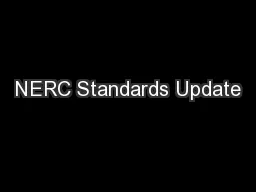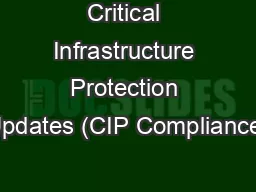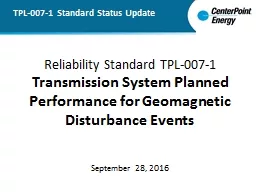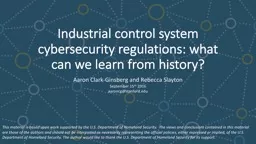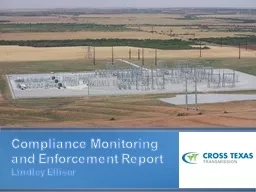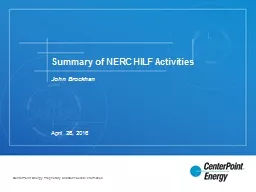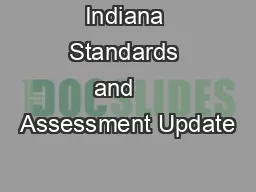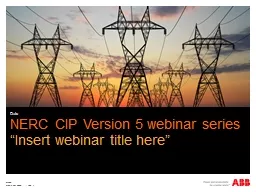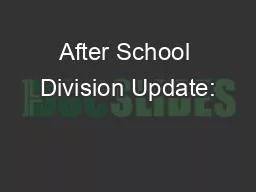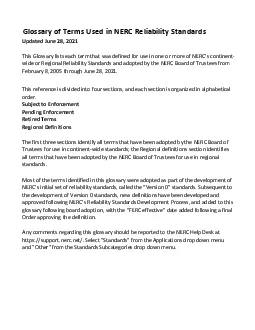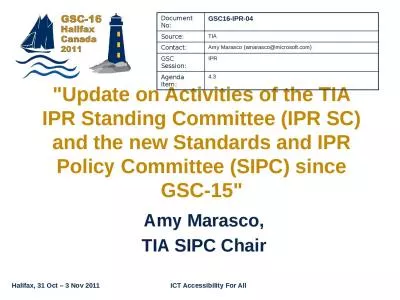PPT-NERC Standards Update
Author : lois-ondreau | Published Date : 2016-11-23
Colleen Frosch ROS Meeting January 7 2016 NERC Standards that go into effect in 2016 January 1 2016 FAC0012 FAC0022 IRO0092 NUC0013 PRC0056 April 1 2016 CIP v5
Presentation Embed Code
Download Presentation
Download Presentation The PPT/PDF document "NERC Standards Update" is the property of its rightful owner. Permission is granted to download and print the materials on this website for personal, non-commercial use only, and to display it on your personal computer provided you do not modify the materials and that you retain all copyright notices contained in the materials. By downloading content from our website, you accept the terms of this agreement.
NERC Standards Update: Transcript
Download Rules Of Document
"NERC Standards Update"The content belongs to its owner. You may download and print it for personal use, without modification, and keep all copyright notices. By downloading, you agree to these terms.
Related Documents

